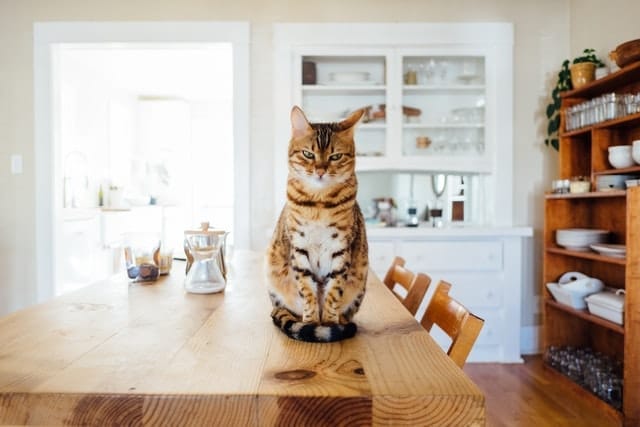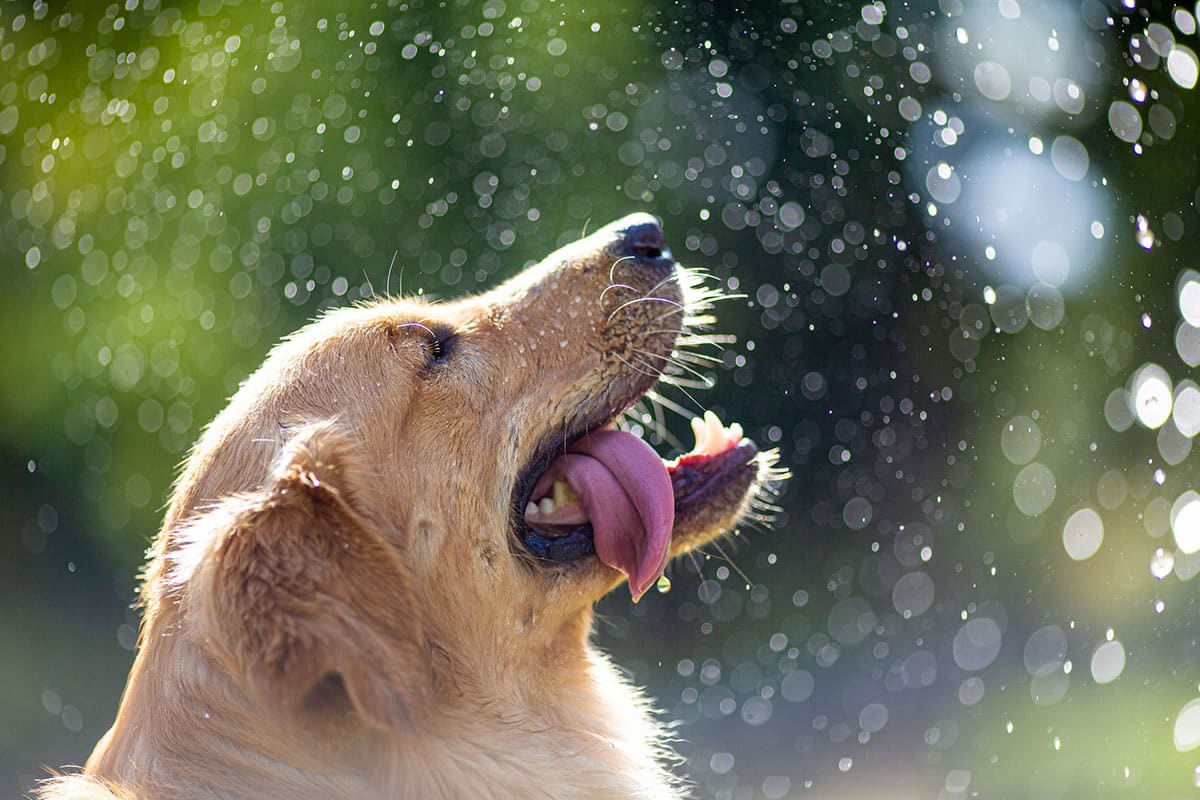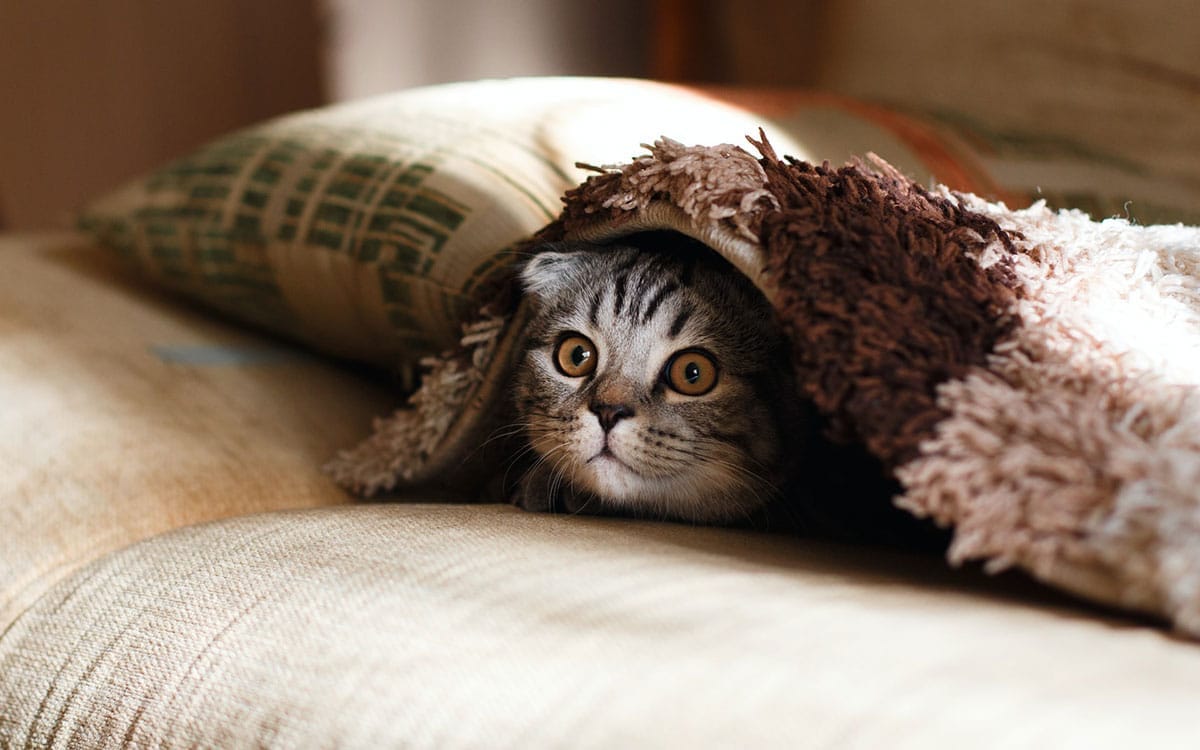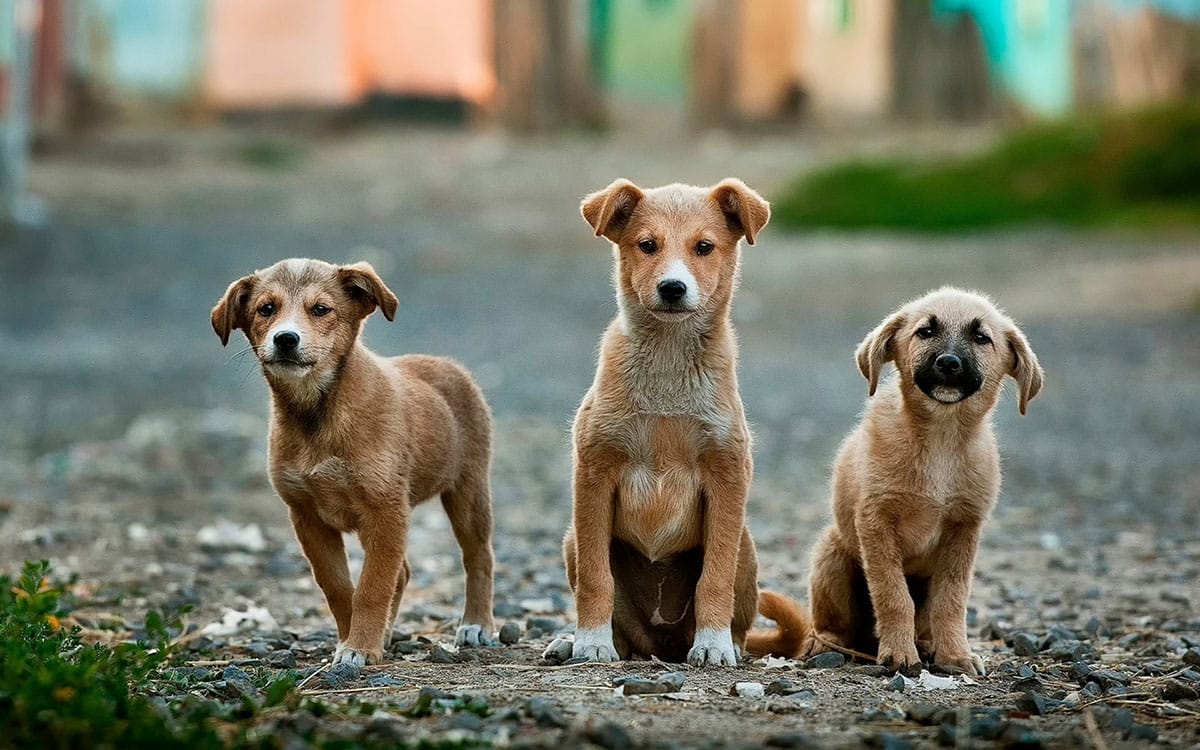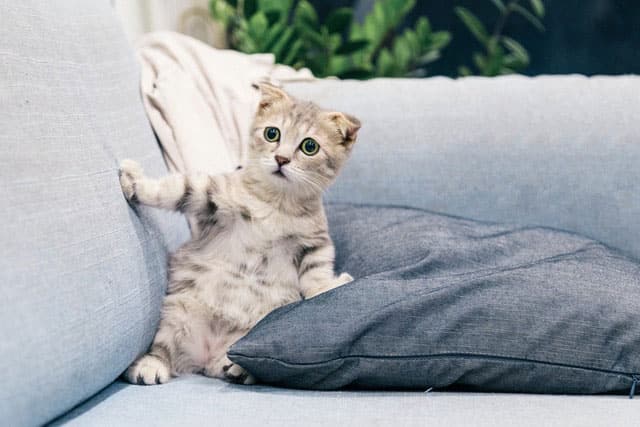Cat Age Calculator
Cat years to human years calculator
Discover your pet’s age easily with our Cat age calculator, and convert cat years to human years with our reliable cat years to human years calculator.

Select Pet Type:

Select Size:
(20 lbs or Less)
(21-50 lbs)
(51-100 lbs)
(100+ lbs)
Enter Age In Years:
Your dog's age in human years:
Your Results
In human years, your dog is...
and would be considered an...
by a vet
Understanding Cat Years to Human Years
I’ve been on quite a journey as a cat-parenting enthusiast. My cat Misty went from a hyperactive ball of fur to a moody teenager, and now she naps like a middle-aged professor. This transformation sparked my curiosity about calculating her age in human years.
The idea that one cat year equals seven human years is a myth! It stems from a similar misconception about dog years. In reality, cat aging is far more complex.
Cats develop much faster than humans, especially in their first months. My dad learned this when his Maine Coon showed arthritis signs earlier than expected, prompting us to find a proper cat age chart.
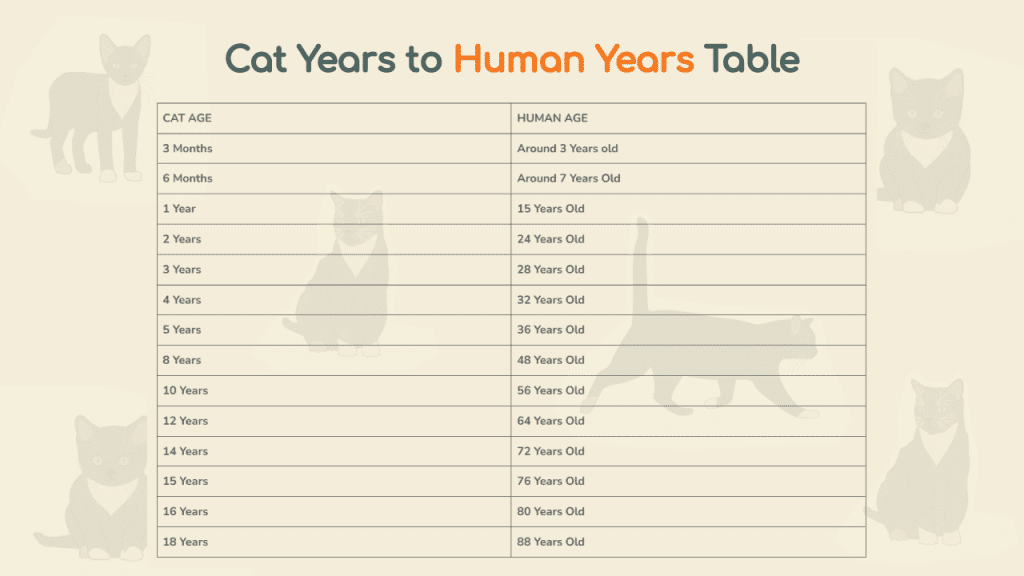
To accurately calculate how your cat’s age compares to a human’s, you need to consider several variations in the age conversion. Things like breed, weight, and whether they’re an indoor or outdoor cat are important elements. A one-year-old cat is roughly equivalent to a 15-year-old human—not a seven-year-old child as the popular legend suggests! This explains why your kitten goes from playful baby to moody teenager seemingly overnight. My old friend Sophie went from shredding furniture to demanding a nice bed for her stiff joints in what felt like no time at all.
This reference point helps us understand our kitty’s place in the world—whether they’re under 2 years old and full of energy, or reaching their golden years when they need extra comfort to ease their arthritis. Knowing your cat’s true age gives you empathy when dealing with their changing needs, whether they’re a destructive youngster or an old companion needing gentler care. And despite the nine lives legend, a proper guide to cat life stages and cat lifespans shows our feline friends typically live to be approximately 15-20 years old in human years—making each of those years all the more precious.
Cat Years to Human Years Table
| CAT AGE | HUMAN AGE |
| 3 Months | Around 3 Years old |
| 6 Months | Around 7 Years Old |
| 1 Year | 15 Years Old |
| 2 Years | 24 Years Old |
| 3 Years | 28 Years Old |
| 4 Years | 32 Years Old |
| 5 Years | 36 Years Old |
| 6 Years | 40 Years Old |
| 7 Years | 44 Years Old |
| 8 Years | 48 Years Old |
| 9 Years | 52 Years Old |
| 10 Years | 56 Years Old |
| 11 Years | 60 Years Old |
| 12 Years | 64 Years Old |
| 13 Years | 68 Years Old |
| 14 Years | 72 Years Old |
| 15 Years | 76 Years Old |
| 16 Years | 80 Years Old |
| 17 Years | 84 Years Old |
| 18 Years | 88 Years Old |
| 19 Years | 92 Years Old |
| 20 Years | 96 Years Old |
| 21 Years | 100 Years Old |
| 22 Years | 104 Years Old |
| 23 Years | 108 Years Old |
| 24 Years | 112 Years Old |
| 25 Years | 116 Years Old |
What is a Cat Year?
When my tabby Milo turned two, I noticed his activity levels dramatically changing—suddenly the wild kitten who knocked everything off my shelves was settling into longer naps! This shift made me realize how crucial understanding the concept of cat years truly is; since cats have a much shorter lifespan than humans, we need a way to compare their age to human years beyond simple maths like the old “multiply by seven” myth. Knowing your cat’s age in human terms helps you better grasp their maturity level and anticipate their changing needs, including adjustments to their food intake and awareness of potential cat illness risks that emerge at differing stages of feline life—my vet explained that Milo’s sudden calm wasn’t laziness but simply him entering his cat version of young adulthood, a transformation that happens much faster than our own developmental timeline.
How Old is My Cat in Human Years?
After my grandmother insisted my 5-year-old tabby was “practically middle-aged,” I spent weeks researching the relationship between cat years and human years.
Despite what many believe, there’s no reliable scientific way to perfectly calculate this conversion—it’s more about creating a sense of relatability between species than exact science.
While the method to calculate a dog’s age can vary by breed and size, the cat years to human years calculation is surprisingly straightforward. My vet explained that the American Animal Hospital Association (AAHA) age guidelines—created and agreed upon by the Feline Advisory Bureau (now International Cat Care) and the American Association of Feline Practitioners (AAFP)—provide the most trusted rough outline.
According to this guide, the first year of a cat’s life is equal to approximately 15 human years, while the second year of a cat’s life equals an additional nine human years. After second year of your cat’s life, each additional year is equal to about four human years.
For cats two years and older, you can use this simple formula: take your Cat’s Age (minus 2), multiply it by 4, then add 24 to get the equivalent Human Age.
This explains why my once-hyperactive kitten calmed down so dramatically after his second birthday—he wasn’t just growing up, he was effectively transforming from a teenager to a young adult in human terms! It’s become an important note in my cat care journal, helping me understand his changing energy levels and health needs at each life stage.
How Many Cat Years Are in a Human Year?
When my sister’s cat Whiskers turned 6, she joked he was having a midlife crisis because of his sudden interest in catnip toys. She wasn’t far off! The first year of a cat’s life is equivalent to 15 human years—a staggering difference that explains why kittens develop so rapidly compared to human babies. Then the second year adds nine more human years, meaning at just 2 cat years, your feline friend has reached approximately 24 human years in maturity. After this initial rapid development, each additional human year adds roughly four ‘cat years’ to your pet’s biological age. So a cat at age 3 is about 28 human years, while a cat six years old (like Whiskers) is equivalent to a 41-year-old human—definitely approaching middle age! The 7-year rule might offer a simple, broad answer of 7 cat years in a single human year, but it’s not entirely accurate since cats age faster in the first 2 years of life.
Determining your cat’s age in human years is not simple as multiplying their age times seven. According to the American Veterinary Medical Association (AVMA), cats reach the equivalent of 15 human years in their first year of life and 24 human years by their second. After second birthday, these fur babies age about four human years for every cat year. What’s fascinating is that generally, a cat 1 year old is already considered adolescents, akin to a 13- to 15-year-old human. After turning 2, cats begin to age at a rate roughly equivalent to 4-6 human years every year of the cat’s life. And unlike different dog breeds that grow up at different rates, domestic cats age similarly across all breeds. This consistent aging pattern helped me understand why Whiskers suddenly preferred sunbathing to chasing toys—he wasn’t being lazy, he was simply acting his human equivalent age!
Alternative Ways to Calculate Cat Age
While the standard formula (15 years for the first year, 9 for the second, then 4 per year after) is solid, some experts suggest different approaches for young kittens. One method from feline care guides compares early months closely to human childhood: a one-month-old kitten might align with a six-month-old baby, a three-month-old with a four-year-old child, a six-month-old with a ten-year-old, and an eight-month-old with a fifteen-year-old teen. These alternative calculations are handy if you’re unsure about your kitten’s early milestones or exact age.
What is the Average Cat’s Life Expectancy?
Growing up with both farm cats and house pets taught me that the true answer depends greatly on lifestyle—indoor cats live longer than outdoor cats, plain and simple.
The average indoor cat lifespan stretches between 16 to 18 years, with many lucky felines able to reach and pass the venerable age of 20 (my aunt’s tabby Samson made it to 22!). In contrast, most outdoor cats have an average lifespan of just 13-14 years, as life in the great outdoors comes with numerous hazards that shorten their lifespan.
I’ve witnessed this difference firsthand when my neighbor’s outdoor cat barely made it to 12 while my indoor Persian celebrated her 17th birthday with remarkable spryness.
The life expectancy of cats also varies by breed—some cat breeds naturally live longer than others. The Siamese and Manx breeds typically live longest, often able to reach a ripe age in human years that would impress even us.
One of the most fascinating cat facts I’ve stumbled upon is that the world’s oldest cat lived to be 34 (that’s about 153 in human years)! Thanks to improvements in veterinary science and cats living safer lives indoors, cats’ life expectancies have increased dramatically in the last few decades.
Still, it’s never enough time—I find myself spending more time with my feline friends as they age, which is absolutely a great thing for both of us. Their golden years deserve our golden attention.
Purebred vs. Mixed Breed Lifespans
Cats age at the same rate across breeds, but their overall lifespan can vary. Purebred cats average about 12.5 years, while mixed breeds often reach 14 years. The broader genetics of mixed breeds may give them a slight edge in resilience. Regardless of breed, a balanced diet, safe environment, and routine care can extend those years, helping your cat stay vibrant longer.
Choosing a name that fits your cat’s age and personality strengthens your bond. Explore our 300+ pet names for inspiration.
How Do Cats Age in Human Years?
Cats age quickly during the first two years of life—a whirlwind of development that amazed me when I first adopted my calico Pepper—then the process slows down and becomes gradual.
Your cat’s age can be determined through physical changes and behavioral changes that occur in stages roughly matched to the human life cycle. Just like people, as your cat ages, they become more likely to develop health issues. Senior cats tend to slow down due to arthritis, heart problems, or being just plain tired.
When my 16-year-old Pepper took the helm to grow old, I discovered that providing a senior cat with a warm rest area like heated beds was deeply appreciated—something I never considered when she was younger!
Unlike the boundless energy of kittens and young adult cats who remain active, aging and learning through interaction with toys, cat trees, shelves as they explore world and get exercise for their growing bodies, cats in their middle adult years become like humans in their forties.
These sweet cats don’t drive you crazy with frantic playing and running around like kittens, but maintain good health and are ready to be a good cat companion with less maintenance. Every year of your cat’s life is special—a precious time to enjoy your feline friend.
With most cats able to live 15 or more years, you’ll love your cat at every age through their journey from hyperactive kitten to dignified elder statesperson of the household. I’ve found each stage brings its own unique joys, from Pepper’s playful youth to the gentle purring contentment of her golden years.
Factors That Speed Up or Slow Down Aging
Beyond keeping your cat indoors, several factors influence how quickly they age. A nutrient-rich diet tailored to their life stage keeps them spry, while poor nutrition can lead to faster wear and tear. Untreated health issues, like dental problems or chronic conditions, can make a cat seem older than they are. A stress-free home with engaging toys, scratching posts, and cozy perches promotes slower aging. Even indoor cats can face challenges like obesity if they don’t stay active, which can mimic the effects of aging prematurely.
Why is it Important to Know a Cat’s Age in Human Years?
When my tabby Mittens started slowing down at age 9, I initially brushed it off until my vet explained she was equivalent to a 52-year-old human—suddenly her behavior made perfect sense! It’s important to understand your cat’s life stage so you can prepare yourself for the age-related health issues that may occur as they grow older. Comparing their age to human years helps you do better as a pet parent; knowing when your cat has transitioned from adult to mature or into senior cat years will help you give them the best care possible tailored to their life stage. After this realization, I adjusted Mittens’ diet, provided joint supplements, and scheduled more frequent vet visits—all because I finally understood where she truly was in her life journey relative to human aging.
How to Determine Your Cat’s Age
Visual Clues to Your Cat’s Age
If you’ve adopted an adult cat or taken in a stray, you may not know their exact birthday. Here are some reliable ways to estimate their age:
Teeth
I’ll never forget the day my rescue cat Oliver yawned widely and my vet pointed out, “See those yellow stains? He’s older than the shelter thought.” While we can’t pinpoint an exact date for your feline friend’s birthday party, examining their teeth provides a great indicator of a cat’s age through various developmental milestones. A kitten’s first teeth (or baby teeth) appear when they’re just two to four weeks old, with a complete set by six to seven weeks according to Advanced Animal Dentistry. Those adorable needle-sharp permanent white teeth come in around four months of age, replacing the deciduous ones they lose around three months. By six or seven months, cats have all 30 adult teeth in place—like my little small striped kitten I once found sitting on my floor, whose pristine chompers told me she was barely five months old despite her confident demeanor!
As cats age, their teeth tell their story: slight yellow stains or tartar on a few teeth typically mean your cat is between one or two years old, while when these stains appear on all teeth, your cat is likely at least three to five years old. Missing teeth are often a sign your cat has reached a respectable senior age, typically between 10 to 15 years of age. However, it’s important to note that some cats have worse teeth than others, regardless of age, breed, upbringing, diet, or health status. While dental development is the best way to determine age for younger cats, a veterinarian will use clues like wear and tear and tartar buildup to estimate an older cat’s age.
Eyes
The cat’s teeth are not always reliable indicator of age (especially if they’ve had dental work), but their eyes provide a surprisingly useful clue to a cat’s age. The key is noticing the difference between a smooth iris and a crackly looking one—a telltale difference between a young cat and a senior one. Your vet will look closely with an ophthalmoscope during checkups, but even at home, if your cat will let them, you can observe these changes yourself. The most noticeable shift happens after 12 years of age, when a cat’s eyes start showing cloudiness similar to cataracts in elderly humans. If you notice regular tearing or eye discharge in your feline companion, they’re probably a senior cat—though you should mention this to your vet as there may be other causes beyond purely age.
A veterinarian can examine your cat’s eyes to help determine their age by assessing the lens of the eyes. Senior cats often experience iris degeneration, where the once-smooth colored part of the eye begins to look jagged. They also develop a slight cloudiness in their eyes that intensifies with age. In contrast, young cats have bright, clear eyes without discharge. Depending on health and breed, as a cat ages, their cat’s irises appear jagged with time. My elderly Maine Coon developed cloudiness, tearing, and discharge almost overnight, and I learned that prompt veterinary attention preserved what remained of his vision rather than waiting to see if it would improve on its own.
Muscles and Bones
When my 14-year-old Siamese began looking suddenly skinny despite eating well, I realized that age can hide in plain sight beyond mere appearances. If you pay attention to certain physical features, you’ll get a more complete picture of your cat’s age. Just like in humans, a higher activity level in a cat creates better muscle definition—enthusiastic playing, jumping, and running are a young cat’s game. If you notice your cat tends to lose muscle mass and don’t like to move around as much, it’s a clear sign of ageing. Older cats typically become bonier with extra skin hanging loosely and protruding shoulder blades that weren’t visible in their youth.
As cats lose muscle mass with age, it becomes most noticeable along spine, around the shoulder blades, and in the thighs. To properly estimate age-related muscle loss in cats, veterinarians refer to the World Small Animal Veterinary Association (WSAVA) Muscle Condition Scoring Chart during examinations. Your veterinarian can evaluate your cat for mobility issues and joint pain that often accompany aging. While younger cats remain muscular with tight skin, older cats become increasingly bonier with extra skin as they age. Their shoulder bones protrude more prominently, and less activity leads to gradual weight loss and muscle mass loss. My old girl developed arthritis in her hips which further limited her movement, creating a cycle of decreased activity and muscle loss—a common but often overlooked indicator that your feline friend is entering their senior years.
Coat
I noticed the first silver hairs on my tabby Milo’s muzzle when he turned 12—a bittersweet milestone in our journey together. A cat’s fur changes noticeably with age—the fine, soft fur that’s usually reserved for young cats gradually transforms as they mature. Older cats typically develop thicker, coarser fur and sometimes even show patches of grey hair just like humans do! This physical transformation happens at different rates depending on genetics and health, similar to how cat lifespans and how their age converts to human years varies.
As cats age, healthy aging signs include a slight dullness to the coat and a decrease in skin elasticity. Older cats often experience joint pain or dental pain which means they may groom less frequently, causing their coat to appear less pristine than in youth. An older cat is usually identified by thicker, coarser fur, though it’s important to remember that different breeds/mixes have different coat thicknesses naturally—some have fine fur while others have thick fur at any age. Most noticeably, senior cats develop patches of white or gray hair (Milo’s graying fur started around his whiskers before spreading to his chest), and that thicker, coarser fur is quite apparent when you pet them in comparison to young cats with their silky-soft coats.
Other Age Indicators
Check Their Claws
My old Maine Coon Felix taught me a surprising age-detection trick when I noticed his claws clicking on the hardwood floor—something I’d never heard before from my younger cats. While scratching naturally helps cats keep claws healthy by removing the outer sheath, older cats often lose drive to scratch furniture or posts as frequently. This reduced maintenance behavior results in thicker claws that are not wearing down naturally through regular activity. These substantial talons are telltale signs of senior cats, as their claws too long and overgrown compared to younger felines. As claws grow without regular scratching, they can even begin to curve dramatically and sometimes press painfully into the paw pads—I first realized Felix had crossed into his senior years when I noticed his thick, yellowed claws needed regular trimming, unlike my younger cat who maintained her own through enthusiastic attacks on her scratching post.
Get a Blood Test
When my 11-year-old tabby Ollie started drinking excessively, our vet suggested a simple blood test that revealed early kidney problems—a common issue in aging cats I had no idea about! As cats enter their senior years, thyroid problems and kidney disease become increasingly common, both strongly linked to advancing age. A comprehensive blood test can help you and your vet understand your cat’s overall health and potentially catch age-related conditions before symptoms become obvious.
Behavioral Changes
My sweet Pepper started yowling at 3 AM in her fifteenth year—a new behavior that our vet explained was common in elderly cats. More meowing and more wandering around are often the first noticeable signs your cat is advancing in age, along with an increased level of anxiety that might manifest as clingy behavior or new hiding spots. When my neighbor’s 17-year-old cat began getting confused about where his litter box was located, it revealed the disorientation and signs of cognitive decline that frequently appear in senior felines—similar to dementia in humans.
Simple Health Monitoring Trick: C.A.T.S.
To stay on top of your cat’s health as they age, use the C.A.T.S. checklist: Coat for shine and cleanliness, Appetite for consistent eating habits, Temperament for their usual mood and interactions, and Size for stable weight without sudden changes. This quick check can catch early warning signs, like dull fur hinting at nutrition issues or mood shifts suggesting discomfort. Share your observations with your vet during checkups for a clearer picture of their health.
The Stages of a Cat’s Life
The Stages of a Cat’s Life
Unlike humans who take decades to progress through life stages, cats move through their developmental phases much more rapidly. Here’s a breakdown of feline life stages, what to expect, and tips to keep them healthy at every step, drawn from my own journey with cats like Peanut, Jasper, Pepper, Oliver, and Shadow.
Kitten (Birth to 1 Year)
The day I brought home my tabby Peanut as a tiny kitten at just 8 weeks old, I had no idea how quickly kittenhood would fly by! Cats up to one year are intensely curious, playful, and growing fast, like toddlers in human terms. This growth phase is remarkable—kittens develop rapidly both physically and cognitively. Peanut’s boundless energy showed up in midnight zoomies and playful sneak attacks on my ankles that sometimes left marks but always made me laugh. By the end of their first year, kittens are developmentally more like teenagers than toddlers—Peanut certainly developed some attitude! They act on impulse, with constant scratching, climbing, and pouncing that can test your patience.
To keep them healthy, encourage gentle play through positive reinforcement to build social skills for well-adjusted cats. Provide multiple scratching posts, tall structures, and cat trees to satisfy their instincts. Frequent vet visits are crucial to track their rapid growth, and a balanced kitten-specific diet supports their development.
Monthly Age Breakdown
Those first few months with a kitten are a whirlwind of change. A one-month-old kitten is like a one-and-a-half-year-old toddler, already starting to explore and play. By three months, they’re closer to a four-and-a-half-year-old child, bursting with curiosity. At six months, picture a nine-year-old kid, and by nine months, they’re hitting the preteen stage, around twelve years old. This rapid development means regular vet checkups are key to ensuring they’re growing strong and healthy.
Junior (1 to 2 Years)
From one to two years old, cats are like 21–24-year-old humans, full of spunk but starting to settle. My tabby Jasper’s teenage angst was clear when he’d deliberately knock items off my shelves while maintaining direct eye contact—a behavior that mysteriously stopped around his fourth birthday! Cats in this stage are still testing boundaries and asserting independence, much like rebellious teens on the brink of adulthood.
To keep them healthy, mental stimulation is critical—a bored cat might take out frustration on your furniture. Rotate toys weekly and offer evening playtime to channel their energy. Watch for weight gain as their growth slows, and stick to a balanced diet to prevent joint or health issues down the line. Regular vet visits help catch any early concerns as they transition to adulthood.
Prime Adult (3 to 6 Years)
From three to six years, cats hit their peak, matching 28–40 human years. They’re strong, smart, and active, at the height of their physical and mental abilities. This is when cats solidify their bonds with you, becoming reliable companions. To maintain their health, ensure a nutrient-rich diet tailored to their active lifestyle and schedule annual vet checkups to catch any early issues. Interactive toys and climbing structures keep them engaged, preventing boredom or weight gain that could lead to problems later.
Mature Adult (7 to 10 Years)
When my calico Pepper hit this stage, she became the feline equivalent of a 44–56-year-old human, calm and confident. She transformed from a chaotic ball of energy to a cat who loved her window perch, watching birds with the focus of a seasoned hunter who no longer chased every target. Our bond deepened as she became more affectionate, meowing conversationally when I came home instead of hiding like in her younger years. These middle years are often the sweetest: the wild kitten antics are gone, but the challenges of senior care are still ahead.
For health, watch for subtle energy drops and adjust playtime to keep them active without overexertion. A diet suited for mature cats helps maintain weight and joint health. Regular vet visits are important to monitor for early signs of issues like dental problems or arthritis, which can start creeping in.
Senior (11 to 14 Years)
At 11–14 years, cats are like 60–72-year-old humans, and my tabby Oliver showed this when he officially crossed into his senior years. I noticed him hesitating to jump, so I replaced his tall cat tree with a shorter, ramp-style model to accommodate his mobility issues. Senior cats may show slower movements or pickier eating habits and become more susceptible to age-related health issues. Oliver proved seniors still have spunk, though, with bursts of playfulness well into his golden years.
Provide soft bedding and easy access to litter boxes to keep them comfortable. Gentle exercise and careful weight management are critical to maintain mobility. Cats are great at hiding pain, so watch for unusual behaviors, like Oliver’s urinating outside the litter box, which signaled discomfort. More frequent vet checkups help catch issues like kidney problems early. I learned pet insurance can ease the cost of these visits, letting you focus on care without financial stress.
Geriatric (15+ Years)
Cats 15 and older are 76-plus in human terms, and my beloved Siamese Shadow taught me the emotional weight of this stage. It was heartbreaking to see him slow down, but providing comfort made all the difference. While the average cat lifespan is 12–18 years, some, like my aunt’s tabby Samson who reached 22, live longer—20 to 25 years is like hitting the 90s or 100s in human terms! The record-holder for the oldest cat lived to 38 years and 3 days, roughly 168 human years, a comforting thought as I treasured each day with Shadow.
For health, regular vet visits are vital to catch age-related issues like kidney disease or arthritis early. Gentle exercise, like short play sessions, helps maintain mobility. Talk to your vet early about end-of-life care options to fill their final days with peace and love. Adjustments like heated beds or low-entry litter boxes make a big difference. Watch for personality changes, as routine things like visitors might suddenly stress them out.
Indoor vs. Outdoor Cats: A Lifespan Comparison
My sister and I adopted littermates from the same shelter litter—I kept Luna strictly indoors while she let Max explore her fenced backyard daily. Ten years later, the difference in how indoor cats and outdoor cats age differently became painfully obvious. It’s a controversial topic among cat lovers, but the evidence is clear: outdoor cats exposed to more risks age faster and typically have shorter lives.
When I take Luna for her checkups, my vet always comments on the health difference between the two cats. She’s among the indoor cat’s enthusiasts—like many cat parents who strongly believe it’s best to keep cats safely indoors. The lifespan stats she shared were eye-opening: indoor cats routinely live 12-18 years while outdoor cats average just 2-5 years! Still, I understand there are valid reasons on both sides of this argument. According to the AAHA, indoor cats are less likely to experience trauma or exposure to infectious diseases, which naturally result in longer lifespans. They stay safe from dangers like cars, predators, and neighborhood catfights that Max encountered regularly (requiring three abscess treatments in two years).
But indoor living comes with its own challenges. Indoor cats face a greater risk of certain illness types from their environmental limitations, particularly obesity and related conditions. They definitely need extra attention to stay healthy and happy, which means providing plenty of mental stimulation and physical stimulation through interactive toys, sturdy climbing structures, and sunny window perches. Outdoor cats do benefit from a naturally more stimulating environment with more exercise and mental stimulation through exploration, plus beneficial exposure to natural sunlight. Some cats thrive in an outdoor environment and seem unhappy or stressed when cooped up inside.
However, the higher risk of injuries, parasites, diseases, and getting lost is significant. Microchipping and regular vet checkups are essential to keep outdoor cats safe and healthy. Now in their senior years, Luna remains active and healthy while Max shows significant signs of premature aging—living proof of how lifestyle choices affect our feline friends’ health and longevity.
Help Your Cat Live a Long and Healthy Life
I nearly lost my tabby Miles at age 6 to a urinary blockage that could have been prevented with better care. Now I’m obsessive about how to help cat live a long healthy life! If you want to give cat the best shot at a long life, three things matter most: a healthy diet appropriate for their life stage, an active lifestyle with plenty of play, and regular wellness visits to the vet. My vet taught me that consistent support for your cat’s health begins with those regular vet checkups that help detect potential health issues sooner rather than later. Those annual vaccinations and parasite prevention treatments aren’t optional extras—they’re absolute must-haves to protect from preventable diseases that can shorten lifespan dramatically.
The early detection and treatment of age-related health issues like kidney disease, cancer, and arthritis can greatly improve your cat’s quality of life and extend lifespan. After Miles’ scary emergency, I learned my lesson and as my cat grows up, I’ve enrolled in a pet insurance plan to help with the costs of eligible vet bills for unexpected accidents and illnesses. Trust me, when your cat gets sick or injured, you want to focus less on cost and more on providing the best possible care without financial stress. Miles is 12 now and still going strong—something I attribute to catching his kidney disease early through regular bloodwork rather than waiting for obvious symptoms to appear.
Why Are Cat Years Different To Human Years?
So I was playing with my tabby Salem yesterday when it hit me – she’s only 2 but acts like a responsible adult while my teenage nephew still can’t do his own laundry! That’s because cat years are totally different from human years. Cats have a much shorter life than humans and mature quickly to hunt and mate for the survival of species in the wild. While human babies take years to even walk properly, cats start mating around 6 months and can continue having kittens throughout their whole lives. I learned this the hard way when my first cat Pepper had surprise kittens at just 7 months old! Unlike women, cats experience no menopause, which is why it’s super important to spay cat early – unless you want 25+ grandkittens running around!
Those “cat age calculator” charts always fascinated me because they try to calculate between species. Male cats also retain ability to father kittens their whole life, though senior cats become less interested in mating as they age. Still, it’s important to neuter male cat to prevent them from not fathering more kittens (my neighbor’s ancient tom cat still occasionally produces litters at 12!). It’s funny how we humans always view things from our own human perspectives and make charts to understand how cats mature in human years. My vet laughed when I asked if my 3-year-old cat was “21 in human years” and explained that these conversions are just rough guidelines to help us understand our pets’ life stages better. The truth is, cats just experience time differently – living their nine lives at warp speed compared to our single, slower journey.
Flipping It: Human to Cat Years
Wondering how your age calculate in human to cat years? After the first 24 human years (about two cat years), roughly divide your age by four to estimate your “cat age.” So, a 30-year-old human might feel like a seven-year-old cat in energy terms. This playful perspective highlights how fleeting our time with our pets is, making every moment count.








